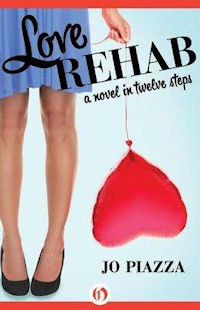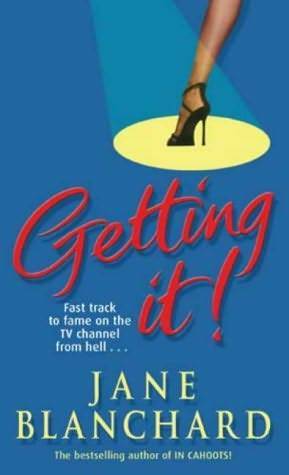Maria Savva's Blog - Posts Tagged "design"
Notes from The Literary Consultancy's conference 2013 - Writing in a Digital Age: 5 Key Stages of Self-Publishing - Part II
Part I of this segment of the series can be found here: http://www.goodreads.com/author_blog_...
Those of you who follow my blog will know that I have been writing a series of posts about what I learned at the recent "Writing in a Digital Age" conference. The staff at The Literary Consultancy have collated various press reports and write-ups on their website. Check it out here: http://www.literaryconsultancy.co.uk/...
My blog posts are included!
Now on to part 2 of this topic. Today I'll tell you what was said about the importance of book design.
There was a very interesting presentation about how book design (the cover and interior) can be an effective marketing tool for writers.
Lots of market research goes into creating covers that sell books. This is one area that I found quite eye-opening. I've always thought that little or no imagination goes into the book covers created by the big publishers, but there is a method in their madness. They know which covers sell, so why bother spending lots on a cover? They have researched the elements that have to be included on a cover for the book to stand a chance of selling to a target market, and they make sure that their covers have those.
Kristen Harrison, found of The Curved House, said that the covers of commercial books 'speak' to the target market.
An example given was that for chick-lit books, typically marketed at 30-40 year old professional women, the usual key requirements are:
1. The colour pink included somewhere on the cover
2. A font that looks like handwriting
3. A woman's legs from the knee down
4. A pencil skirt
Yes, weird, but true... Some covers were shown at the conference and it really was obvious that most of the chick-lit books had followed this winning formula to some extent using one or more of these elements.
Here are some covers I found that kind of prove the theory:








Lots of pink, and legs, and handwriting font there...
Another important point brought up at the conference was about brand identity and how that can help to attract readers and sell books. We see it with the bestselling authors, where they have many books with similar book covers that identify them as the author. For example, they may always use the same font type for their name, or maybe a similar picture on each cover.
The example given at the conference was Rachel Hore. If you take a look at her website, you can see how similar all her book covers are: http://rachelhore.co.uk/
Many indie authors (myself included) do not set out with a marketing plan when designing a cover; they will just choose a cover they feel suits the story and the book. There is a subjective feel to many indie authors' covers. However, from a marketing point of view this is probably not the best strategy.
Some indie authors are aware of the need for brand identity. A couple of authors that spring to mind are Terry Tyler and Susan Buchanan. If you take a look at their book covers, you'll see what I mean:
Susan's books:

Terry's books:


(click on the book covers to see larger images).
It definitely gives a more professional image when you have these types of 'brand image' covers.
******
It's not only the outside of your book that will influence what readers think of it; you have to think about the inside as well.
The type of font you choose is important.
The standard type fonts used by most independent authors are Times New Roman, Helvetica, Arial. At the conference, we were told that these types of fonts may put readers off as they are associated in their minds with office documents, and the look of the book will be 'home-made'. To elevate your book to a more professional status, it was advised that writers should move away from using the standard fonts available with MS Word.
Suggested fonts for use inside a book are benbo and garamond. But it was also mentioned that sometimes publishers will state which font is used at the start of the book on the book information/copyright page. If you read a book by a large publisher and like the font, you can try looking there to see which font it is. Most professional fonts can be bought. A few websites mentioned where you can buy fonts: 1001fonts.com, dafont.com, fontgrill.com, Google
Apparently, readers like the tried and tested book interiors. For example, it's usual in traditionally published books to start the first few pages by numbering in roman numerals, e.g. i, ii, iii, and then when the actual book starts you go onto normal page numbers.
Chapter drops are usually about one third of the page. It was advised that authors stick to this when publishing. The idea is to make readers feel at home, and to associate your book with traditionally published books.
This design strategy does not stop with your book cover. It was advised that things like the fonts used and the colours used on your covers should become your identity online also, for example on your website or your Facebook Page.
Make your website look interesting, add images and videos.
It was also advised that you should use good quality images on your website and other networking sites.
There are some great websites that provide free photos for book covers under the creative commons licence, i.e. you can use the photo for free and just have to credit the photographer. One example given was Flickr: http://www.flickr.com/creativecommons/
I've also found a good site http://www.morguefile.com
Another tip given was that you should complete fully your profiles on Facebook, LinkedIn, and other such sites. Often they are left incomplete. Make sure you add an image to your profile pages and a bio.
Wordpress.com was recommended as a good site for creating a website/blog as it has good quality images.
Something that was mentioned was how big publishers often have different designs for covers depending on where they are selling the book. Different markets around the world respond to books covers in different ways. The point was made, however, that indie authors do not really have the option of designing different covers for different countries because the way we can publish is limited. One book design goes all around the world with independently published books.
There is a website, that I had never heard of before, called Fixabook.com where you can get opinions on book covers, which could prove quite useful: http://www.fixabook.com/
********
Well, I think that is quite enough information for you to get your heads around today. I was going to write up this part of the series in two parts, but I will add a Part III. In the next part of this section of the series, I will pass on some tips from an author who switched from traditional to self-publishing.
**********************************************************************************

Those of you who follow my blog will know that I have been writing a series of posts about what I learned at the recent "Writing in a Digital Age" conference. The staff at The Literary Consultancy have collated various press reports and write-ups on their website. Check it out here: http://www.literaryconsultancy.co.uk/...
My blog posts are included!
Now on to part 2 of this topic. Today I'll tell you what was said about the importance of book design.
There was a very interesting presentation about how book design (the cover and interior) can be an effective marketing tool for writers.
Lots of market research goes into creating covers that sell books. This is one area that I found quite eye-opening. I've always thought that little or no imagination goes into the book covers created by the big publishers, but there is a method in their madness. They know which covers sell, so why bother spending lots on a cover? They have researched the elements that have to be included on a cover for the book to stand a chance of selling to a target market, and they make sure that their covers have those.
Kristen Harrison, found of The Curved House, said that the covers of commercial books 'speak' to the target market.
An example given was that for chick-lit books, typically marketed at 30-40 year old professional women, the usual key requirements are:
1. The colour pink included somewhere on the cover
2. A font that looks like handwriting
3. A woman's legs from the knee down
4. A pencil skirt
Yes, weird, but true... Some covers were shown at the conference and it really was obvious that most of the chick-lit books had followed this winning formula to some extent using one or more of these elements.
Here are some covers I found that kind of prove the theory:








Lots of pink, and legs, and handwriting font there...
Another important point brought up at the conference was about brand identity and how that can help to attract readers and sell books. We see it with the bestselling authors, where they have many books with similar book covers that identify them as the author. For example, they may always use the same font type for their name, or maybe a similar picture on each cover.
The example given at the conference was Rachel Hore. If you take a look at her website, you can see how similar all her book covers are: http://rachelhore.co.uk/
Many indie authors (myself included) do not set out with a marketing plan when designing a cover; they will just choose a cover they feel suits the story and the book. There is a subjective feel to many indie authors' covers. However, from a marketing point of view this is probably not the best strategy.
Some indie authors are aware of the need for brand identity. A couple of authors that spring to mind are Terry Tyler and Susan Buchanan. If you take a look at their book covers, you'll see what I mean:
Susan's books:


Terry's books:



(click on the book covers to see larger images).
It definitely gives a more professional image when you have these types of 'brand image' covers.
******
It's not only the outside of your book that will influence what readers think of it; you have to think about the inside as well.
The type of font you choose is important.
The standard type fonts used by most independent authors are Times New Roman, Helvetica, Arial. At the conference, we were told that these types of fonts may put readers off as they are associated in their minds with office documents, and the look of the book will be 'home-made'. To elevate your book to a more professional status, it was advised that writers should move away from using the standard fonts available with MS Word.
Suggested fonts for use inside a book are benbo and garamond. But it was also mentioned that sometimes publishers will state which font is used at the start of the book on the book information/copyright page. If you read a book by a large publisher and like the font, you can try looking there to see which font it is. Most professional fonts can be bought. A few websites mentioned where you can buy fonts: 1001fonts.com, dafont.com, fontgrill.com, Google
Apparently, readers like the tried and tested book interiors. For example, it's usual in traditionally published books to start the first few pages by numbering in roman numerals, e.g. i, ii, iii, and then when the actual book starts you go onto normal page numbers.
Chapter drops are usually about one third of the page. It was advised that authors stick to this when publishing. The idea is to make readers feel at home, and to associate your book with traditionally published books.
This design strategy does not stop with your book cover. It was advised that things like the fonts used and the colours used on your covers should become your identity online also, for example on your website or your Facebook Page.
Make your website look interesting, add images and videos.
It was also advised that you should use good quality images on your website and other networking sites.
There are some great websites that provide free photos for book covers under the creative commons licence, i.e. you can use the photo for free and just have to credit the photographer. One example given was Flickr: http://www.flickr.com/creativecommons/
I've also found a good site http://www.morguefile.com
Another tip given was that you should complete fully your profiles on Facebook, LinkedIn, and other such sites. Often they are left incomplete. Make sure you add an image to your profile pages and a bio.
Wordpress.com was recommended as a good site for creating a website/blog as it has good quality images.
Something that was mentioned was how big publishers often have different designs for covers depending on where they are selling the book. Different markets around the world respond to books covers in different ways. The point was made, however, that indie authors do not really have the option of designing different covers for different countries because the way we can publish is limited. One book design goes all around the world with independently published books.
There is a website, that I had never heard of before, called Fixabook.com where you can get opinions on book covers, which could prove quite useful: http://www.fixabook.com/
********
Well, I think that is quite enough information for you to get your heads around today. I was going to write up this part of the series in two parts, but I will add a Part III. In the next part of this section of the series, I will pass on some tips from an author who switched from traditional to self-publishing.
**********************************************************************************

Published on July 23, 2013 14:18
•
Tags:
book-cover, book-interior, books, brand-image, conference, cover-design, covers, design, fonts, indie, publishing, the-literary-consultancy, tlc, traditional, writers-conference, writing, writing-in-a-digital-age



